
|
| Accept Cookies | Customize | Refuse Cookies |
Leonardo Nieri www.juzaphoto.com/p/LeonardoNieri  |
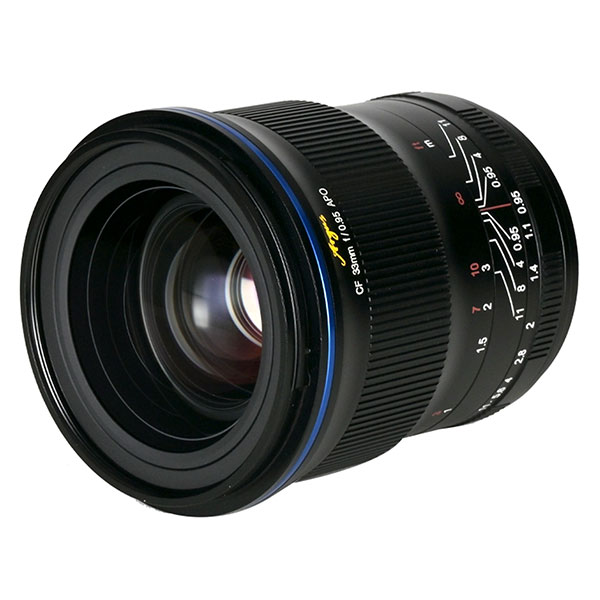 | Venus Laowa Argus 33mm f/0.95 CF APO Pros: Ability to take beautiful photos in low light, sharpness already at f/0.95 that keeps quite well from the center of the photo to the edges. Excellent colour rendering. Blurred great. Cons: It is not suitable for very close photos because you notice a certain smearing of colors, especially white. Lack of autofocus, but this I would say is not a defect, it is a choice. The lens cap is not easy to use. Vignetting at f/0.95. Opinion: I state that I use this lens on the Canon EOS R7 and take photos in raw format that I then turn into .jpg or .hif. The combination of the Venus Laowa Argus 33mm with the R7 is excellent. The R7 has an image stabilizer that with a little concentration and a lot of calm allows you to shoot up to 1/4 of a second. With these exposure times and f/0.95 you can take night photos that look diurnal. For example, full moonlight is used well in the absence of artificial lights. In addition, the R7 has options that facilitate the use of lenses without autofocus. In this case the best method when using f/0.95 to photograph a person is to enlarge the face up to 10x and focus on the eyes. Clearly the person must stand still. If a person is moving, close the lens at f/5.6 or 8 and use Canon's option to colour the area in focus by looking from the eyepiece. At f/0.95 portraits are made with an excellent blur. In my opinion as a blur effect is better than the Canon EOS 5DsR with the Canon EF 85mm f/1.4 L, but the Laowa allows you to use an APS-C. But the surprise was for me that the photos are sharp already at f/0.95 and the sharpness does not drop dramatically at the edges. For example, the Sigma 24mm f/1.4 DG HSM Art which is a great lens, on the Canon EOS 5DsR shows a drastic drop in sharpness at the edges at f/1.4. The VenusLaowa lens is razor-sharp at f/2.8 and above, at least up to f8. The sharpness that extends to the edges allows you to use the VenusLaowa even for landscapes. The color rendering is in my opinion excellent even in low light. This lens is ideal for low-light photos. The lens is not suitable for macro photos since photos taken at f/0.95 to very close subjects (around the minimum distance which is 35 cm) show some color smearing on the edges of subjects not in focus, especially white smudges. The effect decreases by closing the lens at f5.6 or f8. But this lens is certainly not bought to make macro photos! In panoramic photos at f/0.95 there is a certain loss of brightness at the periphery of the photo, or vignetting. I chose the 33 mm and not the 25 mm or the 45 mm for the possibility of taking panoramic photos and portraits (it is a good compromise). Clearly the lack of autofocus sets limits of use, but the beautiful photos that you can get repays the limitations and the non-simplicity of use. In conclusion, my vote for this lens is 10. sent on September 26, 2022 |
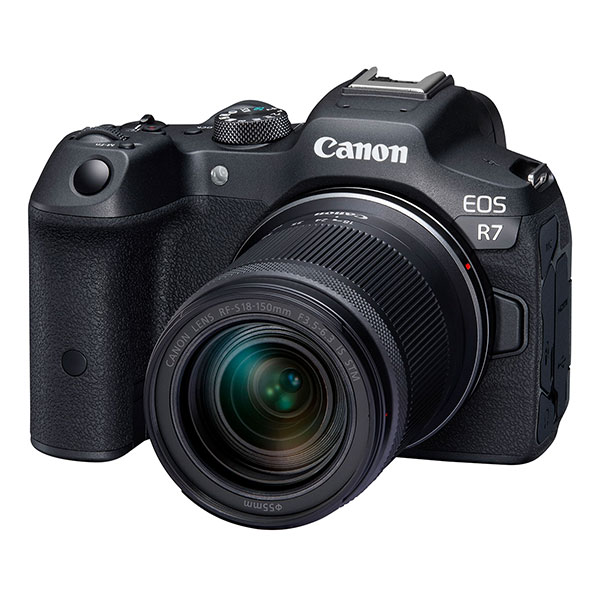 | Canon EOS R7 Pros: Excellent photographic quality with excellent color rendering (photographing in raw format and reworking with Canon DPP), autofocus, burst, high ISO tightness, Focus Stacking in the car, digital lens correction in the car, ability to focus even in the dark, internal stabilizer, price Cons: The photos taken in .jpg format are of excellent quality if using Canon's Picture Style Editor we can make good files. PF3 and it's not easy. Lack of internal flash (for backlit subjects the lack of flash is well compensated by taking an HDR photo where 3 photos are taken in about 1/10 of a second). Lack of a range of RF-S lenses of excellent quality. Opinion: sent on September 24, 2022 |
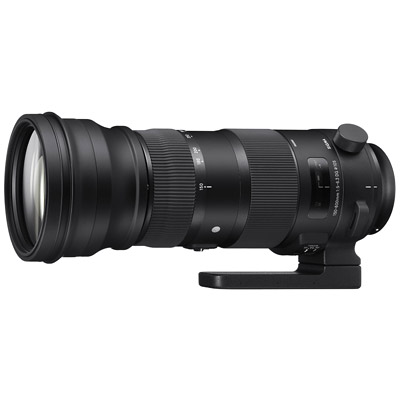 | Sigma 150-600mm f/5-6.3 DG OS HSM S Pros: Sharpness, good color rendering, contrast, makes dark shades lighter (black acquires shape and consequently is not a black spot), the images are sculpted on the sensor so much so that you get beautiful photos even at high ISO. So you get beautiful photos even in low light. Cons: It is heavy and this implies greater difficulty in stopping the viewfinder on the subject when shooting freehand, thanks to a not exciting image stabilizer Opinion: In my opinion it is a great match for my Canon EOS 7D MkII, indeed it was a pleasant surprise. I bought it used and probably the previous owner had already calibrated it, the fact is that where I aim with the optical viewfinder focuses. Often photographing with other lenses a person dressed in black or a black cat I could not see the "shape of black". Using the flash things improved a lot. With this lens there is no need for flash, dark shades open and take shape. Even more surprising the beautiful photos (in my opinion) that are obtained even at high ISO, it seems that the noise decreases. It can be a problem to use this lens freehand, in fact with my 7D you get almost 4 Kg (including the metal hood) which are many. But using it you have the idea of a very robust and well-groomed lens. Hold him for a long time in his tired arms. Clearly it is better to use it with a tripod or leaning. To change the focal length this lens can be used "pump", that is, if with the right hand you hold the camera and with the left hand squeezes the base of the hood then moving the left hand away from the right increases the focal length and vice versa. I find this mechanism very useful in photography to moving subjects that if anything appear suddenly. The image stabilizer is not excellent. The speed of Autofocus seems normal to me, that is, fast. In my opinion this lens has an excellent quality/price ratio and consequently my rating is 10. sent on October 03, 2021 |
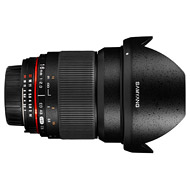 | Samyang 16mm f/2.0 ED Pros: Also sharp at f2, very sharp from f2.8 to f8. Excellent color yield. It's almost like it's able to decrease noise at high ISOs. With a minimum focus distance of 20 cm it has good magnification capabilities (I think it's 0.2X), however the macros are great. Cons: The manual focus and also the choice of the correct exposure is problematic at least on the Canon EOS 7DMkII. In the backlight it is easy to have flare. Opinion: The focus on infinity is fine from 11 meters onwards, but the position of the arrow of the head toe ring is not exactly on the infinite sign, I think for every make and model camera must be looked for, then it is always that (you could put u n small sign p.es. white or take advantage of the signs that already are there). When you stop the cursor on infinity it actually focuses at 3.2 meters. The infinite focus is just over at sign 4 for my machine. The focus should be done with The Live View, it zooms in 5x or 10x and you are looking for the best focus. For macro photos, it is best to approach/move the camera closer to or out after choosing the distance. For proper exposure with the Canon EOS 7DMkII machine it is better to go to the exposure control and in the "Adjustment" function put "ISO". This allows the machine to automatically look for the correct ISO value for standard exposure once the exposure time is empirically chosen. Or you put the selection dial on M and look from the eyepiece you try to put the exposure control cursor in the middle position (the vertical dotted line that you see on the right side). If we are with the selection dial on P the machine not being able to understand which optics is mounted does not go below 1/125 of a second, so if we want longer times we have to select them by moving the selection dial on TV. Freehand personally I do not go more than 1/25 of a second. Despite these precautions, sometimes the machine still misses the exposure. So it's not an easy lens to use. In my opinion the canon EOS 7DMkII pairing and this lens is great (as also noted on DxO) and it is worth missing some time to get nice photos. Also it was a surprise to me to note the cleanliness/sharpness of the files obtained, as a result at high ISO the noise corrects more easily. (see example: https://www.juzaphoto.com/galleria.php?t=3256011&l=it). I would say that to get clean/sharp files and with saturated colors (even without or with little post-production) this is the best lens for my 7D. What vote should I give to this goal? Since it does not have the autofocus I should give a low rating, but I believe that those who buy goals with manual focus know the difficulties they will encounter and therefore look only at optical quality, solidity, price: vote 10. sent on July 08, 2019 |
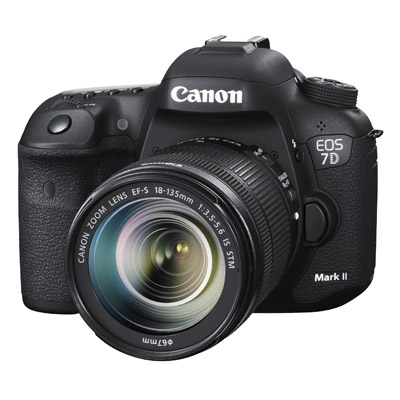 | Canon 7D Mark II Pros: excellent photo quality on high quality targets (beautiful colors), three-dimensional photos, 10 photos/sec burst in raw, Robust camera body, grip well, intuitive controls, many AF options, with low brightness good freehand photos if the light is homogeneous, large photos that involve the ability to make cutouts while maintaining good photo quality, good automatic HDR function, ability to quickly set the shooting of movies, shooting in raw you can improve the photo quality with the programs provided by Canon, but with high quality lenses the photos come out beautiful even without PP. Cons: low dynamic range, with standard designed .jpg photos come out slightly veiled (especially for panoramic photos) and if 100% unseen, at night it is difficult to automatically balance white works well, poor range of shades of red and yellow, it is difficult to 'lighten' the dark/black parts of a photo even at low ISO, in photos in the night sky you notice horizontal grooves trying to increase the brightness of dark areas, the GPS function is often slow to take the signal or fails. On some objectives (especially those with f less than 1.8) the focus is wrong by aiming from the viewfinder. The error does not correct with the Front and Back focus adjustment because it is too random and too extensive. Opinion: The photos normally come out slightly veiled and with little dynamic range, particularly if they are panoramic photos. It is advisable to shoot in raw and elaborate with appropriate programs (also Canon DPP) mainly to increase the dynamic range and increase sharpness. For example, the photos taken with the old Canon G5 are of excellent quality (as you can see https://www.juzaphoto.com/me.php?pg=144193&l=it) even if they come out as .jpg and are very sharp, with saturated and bright colors: there is no need for any post production. If we take photos in .jpg the image quality is mediocre with the Canon EOS 7D and even worse with the Canon EOS 450. Only with photos made in raw and with post production you can get a great quality of photos. But there are striking examples of photos taken with EOS 7D that with a modest PP are spectacular in my opinion: they are very sharp (even at 100% magnification), with saturated and well contrasted colors (examples: https://www.juzaphoto.com/hr.php?t=2138103&r=96921&l=it - https://www.juzaphoto.com/hr.php?t=1732643&r=19965&l=it): if you can create a good light with the flash or in any case take a good light, photos taken with the EOS 7D are spectacular up to ISO 400 or even 800. In these cases the image quality of the old Canon G5 is largely outdated. When we are around photographing places and/or very beautiful things often the photos do not cover well the very bright areas at the same time as the dark areas (it happens in particular with fisheye). In this case the HDR function of the machine is very useful which thanks to the remarkable speed of execution of 3 shots (if there is a lot of light it performs them in 3/10 of a second!) can be done freehand. The photos come out as .jpg, but as a souvenir photo of a trip they are fine. If instead we want a nice photo starting from the raw we do a braketing of the exposure (for example with exposure -2, 0 and +2, of course it is better to put the flurry to be able to take these 3 photos in very quick succession) and then we do an HDR that combines the 3 PP photos (if we managed to hold our hand still on a chosen point then the resulting photo is sharp). Clearly the union of a sequence of shots to make HDR cannot be done if there are fast-moving objects. The photos I took of my daughter when she played football on a beautiful sunny day came great thanks to the barrage of 10 photos per second that allows you to choose the best one. Movies come in well and activate quickly. I have a lot of fun making movies at the microcosm ... here the scenes cover a few cm2. P.S. After about 3 years of further use of this camera I can say that with quality goalses you can get beautiful photos not only at ISO 100, but also at high ISOs if there is good/homogeneous light. With very sharp goalses you get a high quality even looking at the photo 100% or even 200% as if it were a Full Frame (see my photo "A wisteria under the olive trees"). In particular, I think it is excellent to make colors even at high ISOs. With these goals you almost don't need to do post-production. The best lens I have is the Canon 65 mm MP-E only for macros (images are carved on the sensor), then the Samyang at 16 mm, the Samyang Fisheye at 8 mm, the Canon EF-S 24 mm and the Canon EF-S 60 mm macro. The Sigma 24 mm f1.4 and canon EF 50 mm f1.8 also take beautiful sharp and clean photos, but the 7D misses autofocus by looking from the viewfinder with this lens and I am forced to use the Live-View. sent on October 03, 2017 |
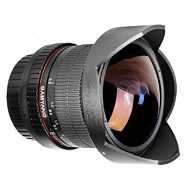 | Samyang 8mm f/3.5 UMC Fish-eye CS II Pros: Sharp from f5,6 and beyond (I haven't checked over f11), easy to focus manually (with the dial of focus on infinity objects are sharp already at 1 m), makes the colors bright, allows you to shoot freehand with little light (suggestive night photos) , wide field of view, offers an original point of view (if you accept the inevitable distortions), excellent HDR photos, ideal for taking photos of interiors such as churches and houses, but also to take large panoramic photos, photos of very close perspectives capture Three-dimensionality. Cons: at f3.5 is virtually unusable: little sharpness and a lot of color smearing. The inevitable perspective distortion of the fisheye may not please everyone. While it is very sharp on photos of very close objects (within 50 cm) you often notice a kind of "nebbioline" on panoramic photos that needs to be corrected in postproduction (perhaps this is a flaw of the Canon EOS7D that has an anti-aliasing filter too strong). Opinion: It's fun and allows you to take home great photos. However, the wide field of view makes it difficult to mediate very bright areas with dark ones. HDR shooting solves the problem, but it's good for static photos, not for moving subjects. Since it doesn't cost much, I recommend it. For proper exposure with the Canon EOS 7DMkII machine it is better to go to the exposure control and in the "Adjustment" function put "ISO". This allows the machine to automatically look for the correct ISO value for standard exposure once the exposure time is empirically chosen. Often it overexposes anyway. The real horizontal visual field angle that I measured with the Canon EOS7D is about 140 degrees. For example, if I approach a wall of a house, when I am 1.8 m away I can take about 5.1 m to the right and 5.1 m to the left, which is still a lot. It is possible that on the diagonal the field angle reaches 180 degrees. sent on April 30, 2016 |
 JuzaPhoto contains affiliate links from Amazon and Ebay and JuzaPhoto earn a commission in case of purchase through affiliate links.
JuzaPhoto contains affiliate links from Amazon and Ebay and JuzaPhoto earn a commission in case of purchase through affiliate links.May Beauty Be Everywhere Around Me